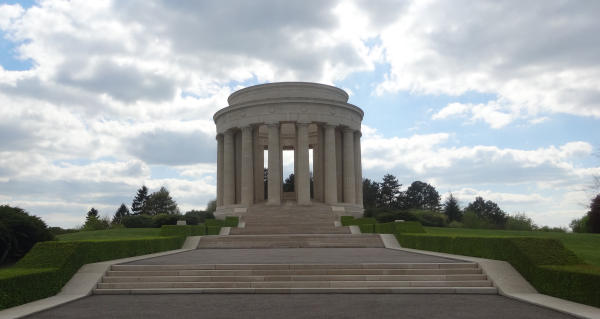
PARIS—I’ve been tagged with being a war buff, and a history buff. When I say No, not really, I’m reminded of the articles I’ve written about war sights in France, the photos posted on Facebook from my visits to WWI and WWII cemeteries, monuments and museums, the numerous lectures I’ve given the U.S. about “remembrance tourism,” as the French call it (war touring if you prefer), and the many times I accompany Americans on tours of the WWII Normandy Landing Zone and, less frequently, of WWI sights.
Visiting, lecturing and touring have taught me a lot about American involvement in the First and Second World Wars. But my interest is not in war in and of itself, let alone the range of a 75 mm field gun vs. a 155 mm howitzer. What I’m especially curious about is the mindset of the contemporary American traveler. I’m interested in understanding how Americans of different backgrounds relate to their/our own history in France and, more importantly, how that reveals a sense of their individual and our collective place in the world. The First and Second World Wars are significant steps in that history and that place. But I am not a war buff. I am not a history buff. What I am is an American France travel buff. So I would be remiss not to visit American-related and other war sights and to try to understand how and why they came about and what they may signify today.
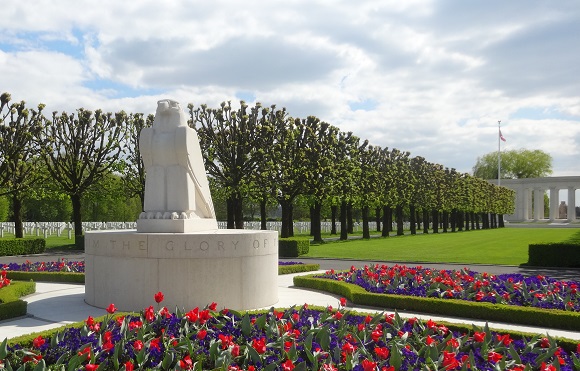
Yet I recognize that the vast majority of Americans of the 21st century have scarce interest in the First World War—and that despite the spring of 2017 marking the centennial of our entrance into the war and hence of the beginning of the so-called American Century.
Some historical events of 1917: The U.S. declared war on Germany on April 6; General John J. Pershing, commander-in-chief of the expeditionary corps arrived in Boulogne-sur-Mer on June 13; the first major contingent of American forces arrived in France at Saint Nazaire on June 26; American troops marched down the Champs-Elysées in Paris on July 4, and that same day Pershing visited Lafayette’s tomb in Picpus Cemetery.
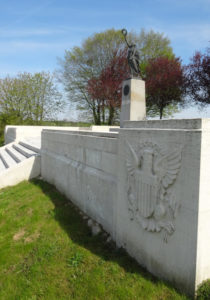
As I write today, however, one hundred years later, Americans, in their vast majority, whether homebound or travel bound, as well as our elected officials, show little to no interest in the centennial. (We do actually have a national World War One Centennial Commission.) Not that every anniversary needs marking, but there are anniversaries that are uncanny reminders of where we are today and of the decisions and worldviews that we hold. The current centennial is one of them. The causes of WWI, the great debates about international intervention of a century ago and our eventual entrance into the war on the side of France and Great Britain, the development of our military and of our military industry, our role in the conflict’s military outcome and in its final treaty: all of those are echoed in debates and decisions today.
But examining history is not our national strongpoint. For some it may even be anti-American. Furthermore, between the America First attack on science, public education and critical thinking, on the one hand, and by the me-first sense that since Teddy Roosevelt shot game and I want to protect big game and since Woodrow Wilson was a bigot then I’ve got nothing to learn from their points of view, on the other hand, there isn’t much daylight for a national history lesson.
Personally, I prefer having a 13-year-old tell me that history is boring than an adult tell me that it doesn’t matter, because I can then tell a story and show a sight to the 13-year-old to spark interest whereas the adult will dig in to ill-informed convictions like trench warfare.
Nevertheless, despite our national aversion to history, we are very attracted to trends. Knowing and taking part in trends is important to us, even without understanding that they are trends since doing so would involve a minimum of critical thinking. Luckily, then, travel is frequently marked by trends.
We’ll always have Paris, of course, but other destinations that Americans select by broad measure in France shift from time to time. A destination will stand out on the map for the short- or medium-term thanks to some well-placed articles and advertisement, famous visitors, a big book or especially a big movie. Images of Ronald Reagan at Point du Hoc 1984, Bill Clinton in the Normandy American Cemetery 1994 or Saving Private Ryan 1998 may inspire thoughts of visiting Normandy some day.

France Revisited doesn’t have the pretension of influencing trends in tourism any more than we do of following them, but we do pride ourselves on helping to fill in the gaps left by other publications. So while awaiting to the trends set in motion by a blockbuster WWI movie, you can read archived articles about Quentin Roosevelt, “the most famous American killed during WWI,” about Belleau Wood and the Aisne-Marne American Cemetery, about Chateau Thierry’s bond with the U.S., and about the American Escadrille Lafayette Memorial near Paris.
More articles about WWI sights, American-related and other, will appear on France Revisited in the coming months, written not by a war buff but by an American France travel buff. In the meantime, my travel research is well underway. Recently, shortly before the first round of the French presidential election, while touring Meuse, Lorraine (northeastern France), I took a snapshot of a desolate corner of the village of Hattonchâtel.
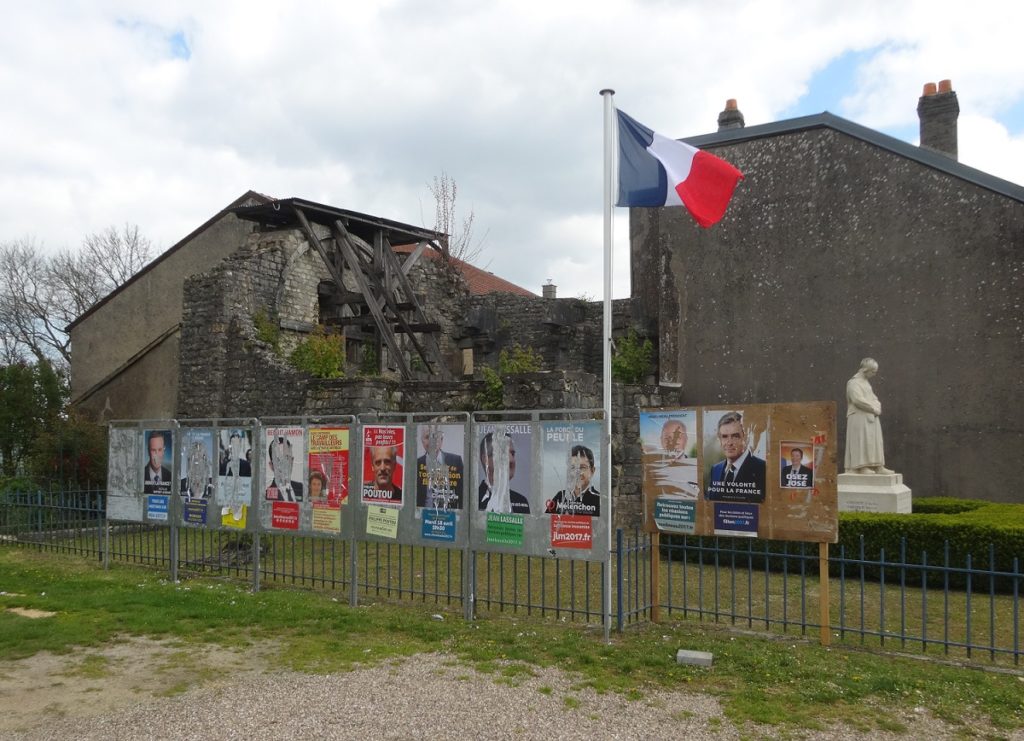
Desolate but very much alive, as the fresh flag and pole and newly pasted and defaced election posters demonstrate. I’m guessing that the posters were slashed by a fan of Philippe Poutou, candidate of the New Anti-Capitalist Party, NPA, whose face remains intact. The slasher may not be difficult to find since Poutou received only 13 votes out of the 967 voters here and in the surrounding 6 villages. Where do their sympathies lie? See here.
Visible behind the posters is one of Hattonchâtel’s scant medieval remnants, an arch that is part of the old entrance gate to the village. Not much to see, but a historical monument nonetheless.
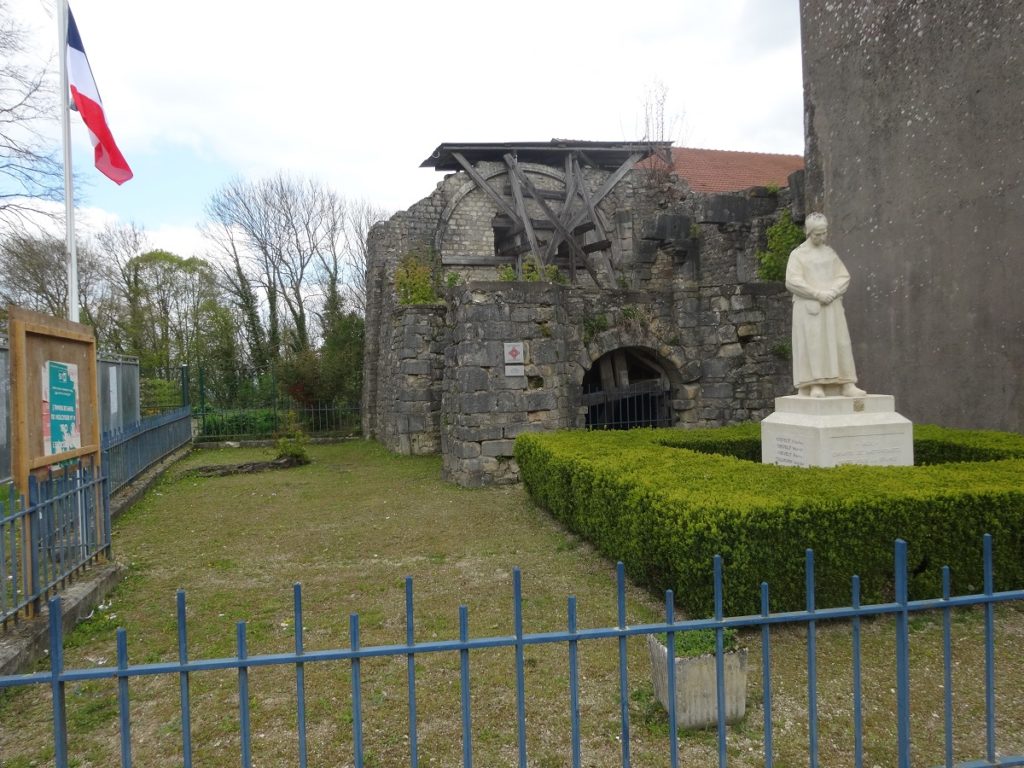
The white monument is a rare example of a WWI memorial that only presents a female figure. The village was heavily damaged in the early weeks of the First World War when the Germans took over the village in September 1914. They were dislodged by American troops four years later.
Hattonchâtel was adopted after the war by Belle Skinner (1866-1928), a philanthropist from Massachusetts, who financed the village’s reconstruction, including the local château, village hall and a school, and the installation of a water system so as to bring drinking water into ever household.
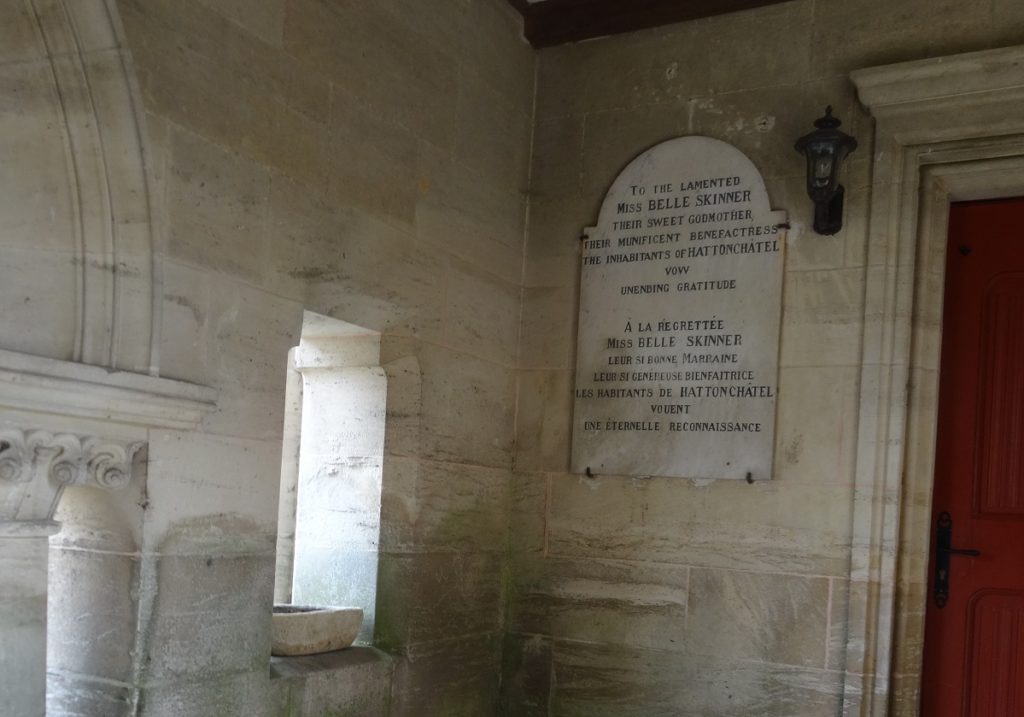
So many stories in one desolate corner.
Far be it from me to suggest that this corner of this village in this part of France is worth the detour. But there you have it in a snapshot, a bit of American history along with much else, past, present and, with the election underway, future.
Most American WWI commemorative events in France will take place in 2018, centennial of our involvement in major fighting in France: Belleau Wood, Saint Mihiel, Meuse-Argonne and others. This summer, though, on private initiative, a transatlantic event called The Bridge 2017 will commemorate the centennial of the landing of the first major American contingent at Saint Nazaire. The ocean liner the Queen Mary 2 has been chartered for the occasion. She will be arriving at Saint-Nazaire, site of her construction, from her home port of Southampton, England, before making the transatlantic journey to New York, while four giant trimarans race against her during the crossing. In 1917 the Americans brought with them not only troops that would change the course of the war but also basketball and jazz, not to mention chewing gum and cigarettes. As part of the festivities, therefore the 3X3 Basketball World Cup will be held in Nantes June 17-21 and jazz will be a main feature of the June 21 summer solstice music festival in the area, as well as on board during the transatlantic crossing. I found a publication interested in my writing for them an article on the subject. It’s British. They liked the Queen Mary 2 angle.
© 2017, Gary Lee Kraut
For general tourist information about touring in three of the departments (French subregions) marked by battles involving Americans during the First World War, see Meuse (Meuse-Argonne Cemetery, St. Mihiel American Cemetery, etc.), Aisne (Aisne-Marne Cemetery, Belleau Wood, Blerancourt) and Ardennes (War and Peace Museum, Sergeant York
“The American Traveler and the First World War Sights in France” will be one of four lecture topics that the author will be proposing to universities, Alliance Française groups, libraires and other groups and organizations during his autumn-winter 2018-2019 guest lecture tour in the United States. If interested in this particular lecture write to Gary at gary [at] francerevisited.com.

